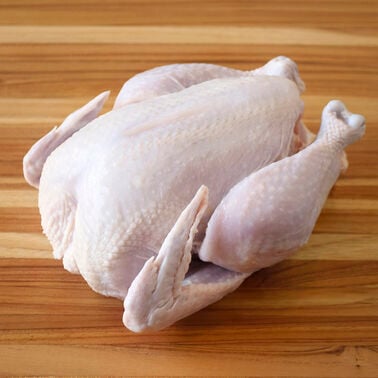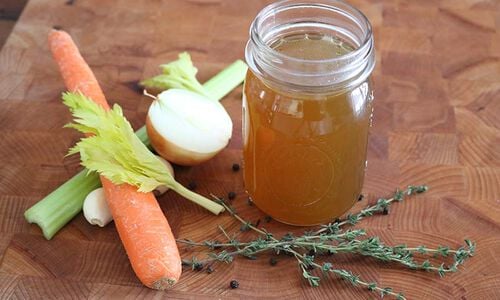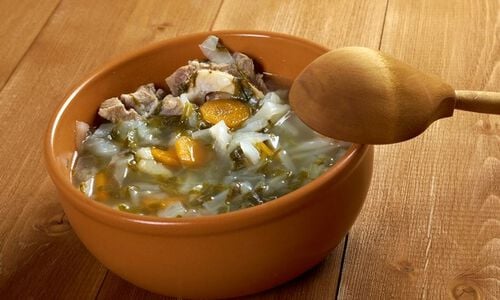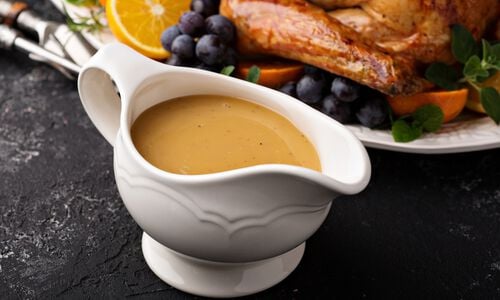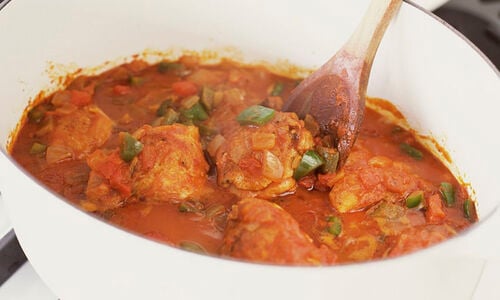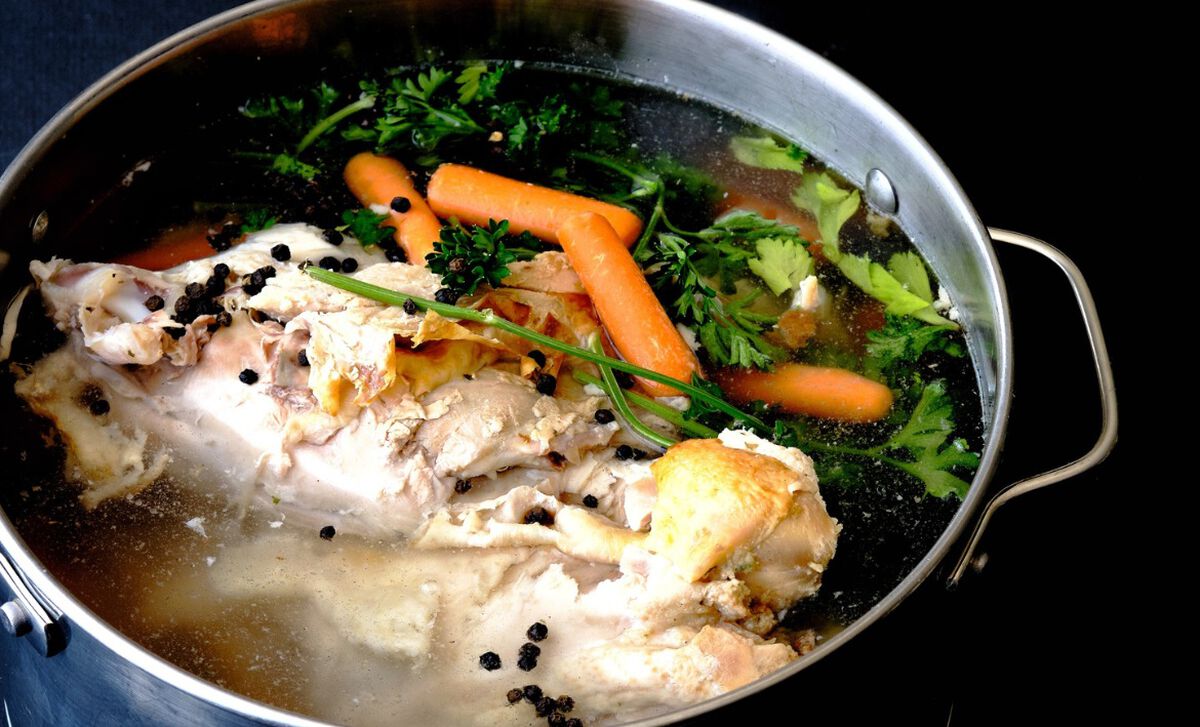
When making poultry stock, these prized juices are created by cooking the bones of the bird together with a mirepoix - a specific combination of chopped aromatic vegetables, in a large stockpot of water. The initial cooking draws or extracts the flavor and juices from the ingredients, and additional hours of cooking slowly distill those juices and flavors into a rich stock. This all-important stock is what will give your gravy its telling character.
It is true that you can simply boil the neck and gizzard in lightly salted water and use the resulting liquid to make your gravy. However, it is only a little more work, and not that much more elaborate to make a good basic brown turkey stock. If you plan to butterfly or debone your turkey, you will have a wealth of good bones to add to the pot. If not, you can also make use of any fresh or frozen chicken bones and trimmings you may have saved for making chicken stock, as they will reflect the flavor of the turkey.
Making Rich Brown Turkey Stock
A basic brown turkey stock is made by first roasting or browning the bones before adding them to the stockpot and mixing with a mirepoix, in a combination of 2 parts onion and carrots to 1 part celery, as an aromatic flavor base. When making a white stock, you start the stock with raw bones and a white mirepoix, replacing the carrots with parsnips to achieve a more pale color, and often adding leeks and mushrooms.
This simple brown stock is a wonderful, hearty base for delicious brown gravy. If you are starting with the neck and other smaller uncooked turkey or chicken bones and trimmings, you can easily chop them up. If you are lucky enough to have larger bones, first disjoint them and crush or crack to expose the marrow. Afterwards, either drizzle and toss with duck fat and roast them in the oven; or brown them in a large, heavy frying pan with hot duck fat. Add some chopped onions and carrots in equal portions, about midway through the browning process, tossing all regularly to prevent burning.
Once the bones are good and browned, transfer everything into a stockpot, while leaving the fat in the roasting or frying pan. Drain off the fat from the cooking pan and reserve. Deglaze the pan with up to 1 cup dry French vermouth or dry white wine, and bring to a boil while scraping all the bits free from the pan. Use a rubber spatula to scrape this mix with all its tasty bits over the contents of the stockpot.
Keeping in mind how much gravy you want to make, and that the amount of stock reduces by as much as half while it simmers; add enough water, sodium-free chicken stock or a mix of both to the pot, making sure that it also covers everything with at least 1 inch of liquid. Add chopped celery with some of the leaves in proper proportion to the onions and carrots, and simmer uncovered for about 30 minutes, skimming the fat and scum from the surface. After that, lightly salt and add a few whole peppercorns, and perhaps fresh or dried thyme and/or a bay leaf to season. Whether or not you add these or other seasonings in addition to the salt and pepper, partially cover by leaving the lid slightly cocked, and simmer for at least another 2-1/2 to 3 hours.
Chill your stock uncovered in the refrigerator. Once it is chilled, remove the solidified grease and strain. Keep only the clear stock and discard the rest. That is all there is to it, you now have a simple, but true fond. Refrigerate this stock, covered tightly until using it to make delectable gravy. The link below will take you to our article on making rich, brown pan gravy for your holiday bird.
QUICK TIPS
1) Start your stock with cold or room temperature water because that will draw the juices better. Using cold water will also form larger protein particles, which will later stick to the sides of the pot or float to the top, allowing you to skim them off the stock. If you start your stock with hot water, the proteins will coagulate faster and in particles too small to skim, resulting in a cloudy stock.
2) Do not overuse salt when making your stock. Instead, adjust the saltiness when you are cooking the actual gravy, and even then only as you taste it.
3) If you use store-bought chicken stock as a base liquid for your stock, use only sodium-free. Even good commercial stocks have high sodium content. This will only intensify by becoming concentrated during the reduction process.
4) A good ratio for making a basic brown turkey stock is at most 2 cups of liquid per 1 cup of bones and trimmings.
5) After you finish skimming the stock during the first 30 minutes, wipe any residual scum from the pot at the edge, and down the walls to the level of the stock.
6) Cool your stockpot before putting it in the refrigerator by setting it in your sink filled with several inches of cold water and some ice.
